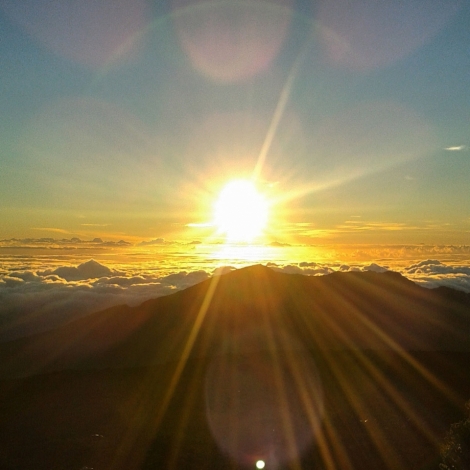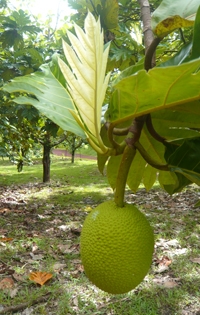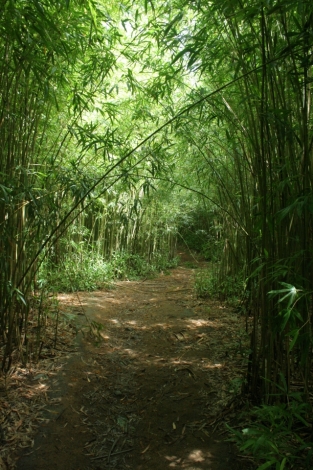Don't miss out on the best jobs!
Subscribe to HelpGoAbroad and weekly we will sent you an email with latest job posts. Provide your email address below
The infamous Hana Highway is a 68-mile stretch of road winding through the jungle from Kahului to the tiny town of Hana in Maui, Hawaii. Every day, hundreds of rental cars brave the hairpin bends and one-lane bridges to reach the isolated town nestled at the bottom of Haleakala, the inactive volcano that takes up the majority of the eastern side of the island. The drive there and back will take about four hours, so most people leave the resorts by sunrise and return by sunset. The drive itself is the main attraction; the road will take you into the dense jungle overflowing with stunning waterfalls and weave back to the coast for picturesque cliff-side stretches of shore. Many tourists will pull over at the major waterfalls to snap quick pictures, grab banana bread at one of the many stands along the way, and turn around as soon as they hit Hana town to get back to the resorts before nightfall. Resorts and guesthouses around Hana can be a bit pricey, but if you’re traveling abroad in Hawaii, East Maui is worth exploring for more than an afternoon by car.
Camp Out
For the adventurous backpacker, there are a few beaches just outside Hana town that you can stay on without paying, but you risk getting kicked out in the middle of the night if you are discovered. The campgrounds at Kipahulu (also known as the Seven Sacred Pools) are only $10 U.S. dollars a night and have flat, grassy areas for tents, BBQ’s, and toilets. Kipahulu is about 45 minutes from the town of Hana, but the campground is right next to O’heo Gulch, a popular tourist attraction, and there are plenty of other places to explore in the area.
Hike Down the Kaupo Gap out of the Haleakala Crater
Haleakala sunrise is a must-see on many tourists to-do list, and rightly so. Watching the sun come up over the Pacific Ocean from the tallest peak on Maui is quite the experience. But below the peak, sprawled across the volcanic crater formed by the inactive volcano, is a wonderland of a different sort. Exotic, endemic species of plants and animals found nowhere else on the island (or the world) populate the desolate, desert-like environment. Many daytrippers will venture into the crater for a short hike, but there are three areas with cabins and campsites for backpackers looking to experience the crater even more.
One of these sites is Paliku, on the eastern edge of the crater. It is the most remote of the three. A long day hike will get you here by sunset, and in the morning, you can traverse down the other side of Haleakala towards east Maui. This trail, known as the Kaupo Gap, will lead you past over-lapping waterfalls through the jungle that is unique to the eastern side of the island. The hike is strenuous, and the weather is known to be unpredictable, so do your research and pack well.
Hike the King’s Trail
The King’s Trail used to be an uninterrupted trail, or alaloa (long path), that circled the entire island of Maui. Its origins date back to the 1500’s, when King Pi’ilani unified the east and west of Maui. The trail is an extension of the previous King’s Road which existed along the coast of West Maui, and it was maintained for hundreds of years after its creation. Over time, it fell into disrepair, and now only small portions of it are still useable.
One stretch of the King’s Trail can be accessed from another popular tourist destination in Hana, Waianapanapa State Park, or black sand beach. The black sand beach alone is worth a few hours of your time, with the freshwater swimming holes, cliff jumping, and, of course, the black sand, but if you have a few extra hours to explore, check out the King’s Trail. The path is rocky and sometimes seems nonexistent as it weaves across the jet-black lava cliffs, and tiny, bright-green plants popping up through the rocks give a stark contrast to the otherwise bleak landscape. The waves crashing onto the jagged shoreline have created blowholes and caves over the years that are worth checking out, and Haleakala towers over the island to the west. It almost seems like an alien landscape.
Visit Kahanu Gardens
Maybe you’re looking to check out the infamous Blue Pool, or the creepy lava tubes advertised in most guide books. Your hunt will lead you down Ulaino Road, about 4 miles north of Hana town. But you’ll quickly find that Blue Pool is now closed because of overcrowding, and the lava tubes steep entrance fee might turn you away. But if you continue down Ulaino, you’ll find yourself at the entrance to Kahanu Gardens.
These gardens are most famous for Pi’ilanihale, the biggest heiau (or place of worship) in Hawaii, but the Breadfruit Institute is located here as well. Breadfruit, or ‘Ulu, is a staple food of Polynesia that is in the fig family, and it is known for its high levels of protein and other nutrients. Kahanu Gardens boasts the biggest breadfruit collection in the world.
Even if your not crazy about ‘Ulu, these gardens host a huge variety of other tropical fruits and flowers, with little placards explaining their importance in ancient Hawaiian culture. There are sprawling grass fields and a pleasant beach here as well. It’s the perfect place to picnic or play a game of soccer during the afternoon.
Hike the Pipiwai Trail
Across the street from the Kipahulu campgrounds in Haleakala National Park is a 4 mile hike into the dense bamboo forest. The trails can be slick and muddy when it rains (which is more often than not), but the waterfalls along the trail are spectacular. Bamboo is technically an invasive species, and when it’s left to grow uninhibited, it will quickly take over and spread across a huge area. Although this isn’t great for native species, it makes for an awesome hiking experience.
There are too many things to do in Hana to list them all in one article, so I’ve only scratched the surface. Its isolation relative to the rest of Maui coupled with a bit of hard work put in by the residents of Hana have kept the area free of major development and resorts. East Maui was once taken over to build a thriving sugarcane industry, but in the past century the jungle has reclaimed the land and Hawaiian culture has been much better preserved. If you’re traveling abroad in Maui, give yourself time to check out the other side.
Sign in to publish a comment



Be the first to comment on this post.